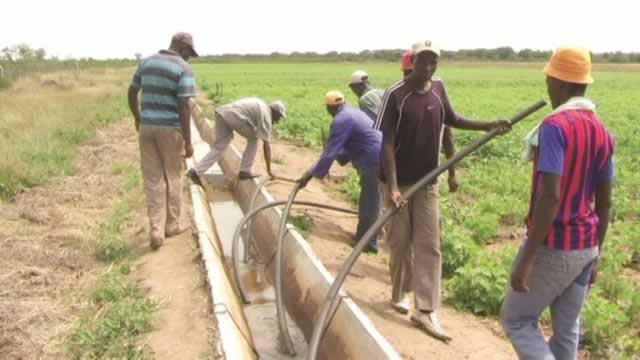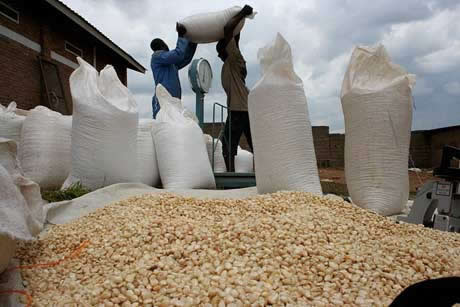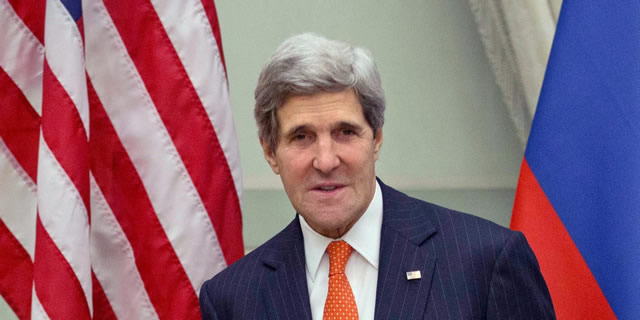Gold rich Bubi facing bleak food security

Tapfuma Machakaire
BUBI district in Matabeleland North province of Zimbabwe is rich in the precious mineral gold, yet, ironically, the majority of rural communities in the district have for years been depending on food handouts from well-wishers.
Mining operations from the large scale, medium to the small scale are mostly carried out either by foreign nationals or people from outside the district who hardly ever make an effort to ensure that the locals also benefit from the underground resources they are exploiting.
The few locals who have attempted to venture into gold mining in the district are mostly school dropouts, who due to lack of resources, pursue the illegal route of gold panning which often finds them in trouble with the law enforcing agents. The Zimbabwe Republic Police (ZRP) regularly mounts roadblocks where they conduct body searches targeting the suspected illegal gold dealers.
The district is situated in ecological regions four and five characterised by low rainfall and attempts by the rural communities to depend on rain-fed irrigation have been dismal. Education has never appeared to be a priority for the communities with most youths resorting to drift to South Africa in search of menial work.
Driving through the acacia shrubs on a sandy trail in ward 17 of Bubi district in June 2014, one is suddenly struck by a sign post which reads: Hauke irrigation funded by European Commission and government of Zimbabwe through the small holder micro irrigation development support programme – Promoting viable and sustainable small holder irrigation.
The concept of irrigation as an alternative method of farming is relatively new in this region where dams and weirs were a rare sight until a few years after the attainment of independence when the government with the support of well-wishers embarked on a programme that would lead to the improvement of the livelihoods of the majority in the once neglected rural areas of the country.
Hauke irrigation scheme, a plush of green reveals a healthy sugar bean crop spread on a stretch of nine hectares, thanks to the World Food Programme (WFP) Food For Assets programme (FFA) which saw the communities being assisted to develop an irrigation project that has become the lifeblood for the communities of this area.
The project came about after the construction of Hauke dam by the government in 1998. But until 2006 when the irrigation scheme began operating the dam had not served its intended primary purpose of ensuring food security for the communities.
It was only in July 2005 that the department of Agritex pegged a 40 hectare plot that was to be developed into an irrigation project. Eighty beneficiaries were identified who paid a joining fee and that saw the birth of the journey towards the establishment of the irrigation scheme in this dry western region of Zimbabwe.
The next stage involved digging a three-kilometre trench from the dam to the site and laying a pipe through which water would be channelled to the scheme. Digging the trench was hard work that required incentives to the beneficiaries. The World Vision Inkosinkazi Area Development Programme came in handy with a project called Gift in Kind (GIK) through which all those who took part in digging the trench would receive goods that included clothes and shoes.
GIK was so enticing that even non-project members joined in clearing the bushes, digging and laying the pipes under the supervision of the government extension workers. The European Commission provided fencing material and after the plot was fenced off the first crop was planted in February 2013.
“We planted maize and vegetables and for the first time we had plenty of food in our area,” said Reuben Khabo one of the farmers on the scheme.
In August of the same year, the farmers planted the second crop and even managed to hold a field day that was attended by officials from various organisations including from the government. “We got a lot of encouragement and donations from the officials who attended the field day,” said Khabo.
For proper and effective management of the project, committees have been set up and these include management, production, security, water and disciplinary committees.
Khabo said extension workers from Agritex and the department of irrigation had provided training on a number of areas that include crop rotation, business management and book keeping, conservation farming, marker linkages and leadership skills.
“Since we started working in the scheme our lives have changed. We no longer think of going to seek employment is South Africa as we used to do since we are busy throughout the year. We are even employing some locals to help us in the fields and we pay them with some of the produce,” said Khabo.
Under the food for assets programme which saw the farmers clearing part of the land as they prepared to plant the first crop each beneficiary received 50kgs maize, 3.75 litres cooking oil and 9kgs beans every 15 days.
Gertrude Ndlovu, the vice chairperson of the scheme, said as women the scheme had helped a lot as they no longer struggle to raise money to pay school fees for their children and to buy stationery and uniforms .
Of the 80 farmers in the scheme 45 are women and 35 are men.
Ndlovu said when the project started members would sell chickens to raise cash for monthly subscriptions towards the project.
“Now when we want to pay our subscriptions we just sell vegetables.” She said she had even purchased two goats and was now aiming to buy a scotch cart with proceeds from the sell of her produce.
“I have managed to buy two goats and I am now aiming at buying a scotch cart” she said.
The chairperson of the water committee, Shepherd Ncube, said his committee was strict in ensuring that there is no wastage of water. Using gravity fed irrigation has reduced the expenses normally associated with pumping water for irrigation. Ncube said the members are paying $36 per month to the Zimbabwe National Water Authority (Zinwa) for water usage.
Mbusi Moyo, chairman of the irrigation scheme who has almost completed building a four roomed house using proceeds from the sell of produce from the project, said all members are building toilets on encouragement from health officials.
“Before we started work in the scheme the farmers did not have toilets and had no funds to build but now after being encouraged by health officials all those who did not have toilets are now busy building toilets at their homesteads.” Said Moyo
Witness Moyo, projects officer with the programme, said the FFA programme sponsored by WFP was launched in June 2012 at a total cost of just over one million United States dollars with a tonnage of close to 1,700 metric tonnes of food rations
He said the project covered three out of 10 provinces of Zimbabwe which are Matabeleland South, Matabeleland North and Mashonaland Central.
“The areas covered under the programme in the three provinces fall within ecological regions four and five where it is generally dry and the rainfall patterns are erratic.
“Most of the areas in these regions are hot and the soils are not suitable for growing maize, which is the preferred staple for the majority of households.” said Moyo.
FFA implementers used the community based targeting strategy to identify the most vulnerable households.
“The communities identified the most food insecure non-labour constrained households for this programme as the work was labour intensive and required able bodied and fit individuals to do the work on behalf of their households.”
The FFA project was aimed at creating assets that could sustain communities and make them food secure in the long term.
Moyo said the programme was designed to be in line with the Zimbabwe productive community works policy framework (ZPCWPF) and the food deficit mitigation strategy. The two strategies require that all humanitarian assistance adopt the community works and/or food for asset cash and asset approach to support able-bodied and non-labour constrained vulnerable households.
Implementing organisations worked with the district drought relief councils in the respective districts in sensitising the community leadership from the vulnerable communities and explaining FFA programme objectives as well as the implementation modalities.
He said the community based planning was used to select and prioritise projects.
Communities were also consulted on the projects that they wanted prioritised and these were used together with the district development plans whose source was also the community.
The FFA projects were implemented in partnership with government line ministries as well as other organisations dealing with livelihoods and food security projects within the identified districts.








Comments